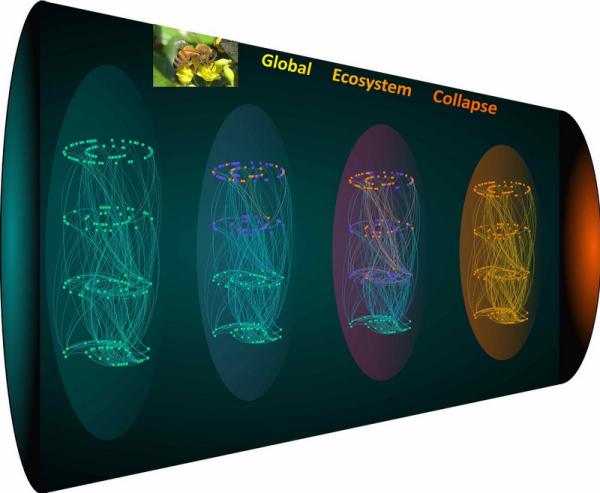
A network metric called the K-core could predict structural collapse in mutualistic ecosystems, according to research by physicists at The City College of New York. The K-core appears able to forecast which species is likely to face extinction first, by global shocks such as climate change, and when an ecosystem could collapse due to external forces.
Led by Flaviano Morone and Hernán A. Makse, the physicists from CCNY’s Division of Science used state of the art network theory to predict the tipping point of an ecosystem under severe external shocks like a global increase of temperature. They determined that a network metric termed the K-core of the network can predict the terrifying tipping point of climate Armageddon.
The idea applies to any network -- from species interacting in ecosystems, like plant-pollinators or predator-prey -- to financial markets where brokers interact in a financial network to determine the prices of stocks and products.
In all these networks a hierarchical structure emerges: each species in the ecosystem belong to a given shell in the network: the so called K-shells. In the periphery of the network is where the commensalists live. These are species that mainly receive the benefits from the core of the network but give nothing back (not to be confused with parasites which benefit from but at the same time harm the network core).
“Amazingly, these peripheral shells are highly populated, indeed, there are many commensalist species in most ecosystems and markets,” noted Makse. “These species are predicted to go extinct first and much before the entire ecosystem collapses.”
Fortunately, the CCNY theory provides early warning signals that can be monitored to predict this collapse well in advance. Indeed, monitoring the health of the vital inner K-core of the network is the clear marker to anticipate the ecosystem collapse.
“The theory has enormous implications for not only monitoring ecosystem's health but also financial markets,” said Makse.
The study, whose other co-author is research associate Gino Del Ferraro, appears in the current issue of Nature Physics. Click here to read the entire paper.
About The City College of New York
Since 1847, The City College of New York has provided a high quality and affordable education to generations of New Yorkers in a wide variety of disciplines. CCNY embraces its role at the forefront of social change. It is ranked #1 by the Harvard-based Opportunity Insights out of 369 selective public colleges in the United States on the overall mobility index. This measure reflects both access and outcomes, representing the likelihood that a student at CCNY can move up two or more income quintiles. In addition, the Center for World University Rankings places CCNY in the top 1.2% of universities worldwide in terms of academic excellence. More than 16,000 students pursue undergraduate and graduate degrees in eight professional schools and divisions, driven by significant funded research, creativity and scholarship. CCNY is as diverse, dynamic and visionary as New York City itself. View CCNY Media Kit.